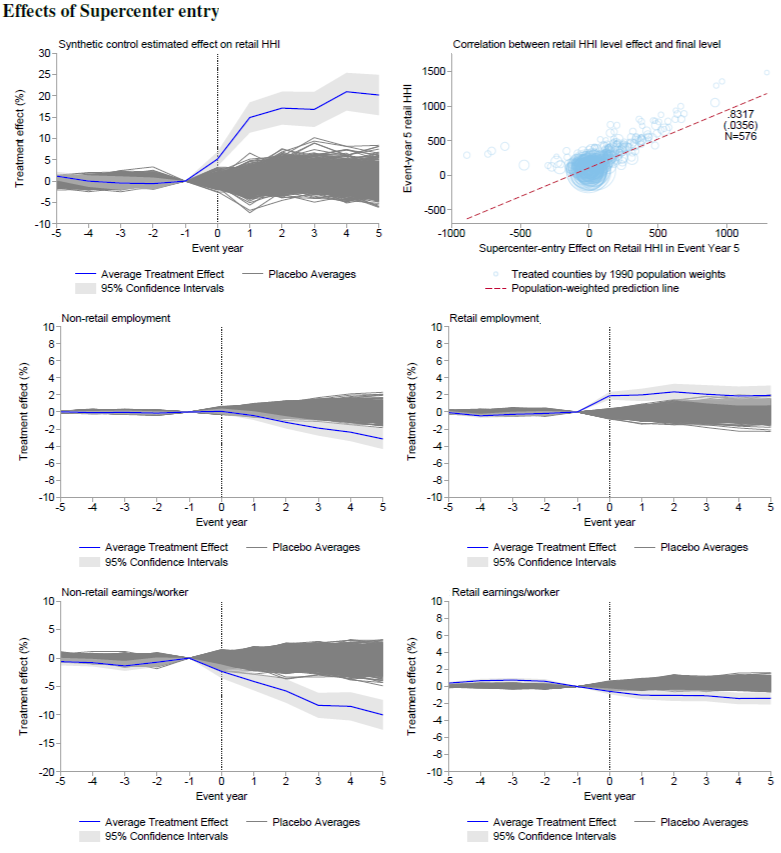Walmart Supercenters and Monopsony Power:
How a Large, Low-Wage Employer Impacts Local Labor Markets
Updated: November 2025
Abstract: This paper considers the extent and impact of monopsony power exercised by Walmart Supercenters. I address the issue of potential bias from endogenous store entry, as well as other identification concerns, by adopting a stacked synthetic control approach to estimate average county-level labor market effects of the Walmart Supercenter roll-out across the U.S. Crucially, I construct the pools of synthetic control donor counties from novel observations of counties where Walmart tried to open a Supercenter but was blocked by local efforts. I first show Supercenter entry sharply increased labor market concentration. Supercenters were able to hire large numbers of retail workers with zero increase in average earnings, indicating Walmart had wage-setting power. I then show Supercenter entry caused large declines in overall local employment and earnings, particularly among local goods-producers, indicating Walmart displaced manufacturing demand away from local producers and to its own national and international suppliers. In counties with a Supercenter, subsequent exogenous minimum wage increases led to significant growth in aggregate and retail employment. These results run counter to predictions for competitive labor markets, and indicate Walmart Supercenters gradually accumulated and exercised monopsony power, with negative consequences for workers.
related materials
Summary Poster (Outstanding Poster Award, 14th All California Labor Economics Conference)
Policy Brief on monopsony power in the U.S. retail sector (with The Washington Center for Equitable Growth)
Earlier version: The Washington Center for Equitable Growth Working Paper 012822

